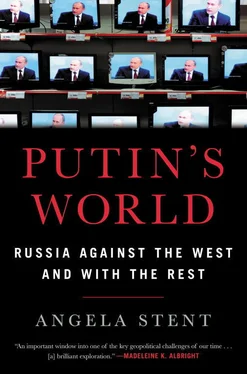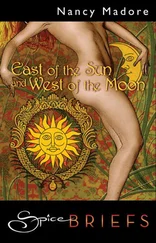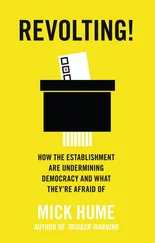Third, Russia has a right to a sphere of privileged interests in the post-Soviet space. It defines its vital security perimeter not as the borders of the Russian Federation but as the borders of the post-Soviet space. Russia will work to ensure that its former Soviet neighbors not join any alliances deemed hostile to Russia. Hence, Moscow will seek to guarantee that no Euro-Atlantic structures—primarily NATO and the EU—move any closer to Russia than they already are because they threaten Russia’s vital interests.
Fourth, some states are more sovereign than others. Great powers like Russia, China, India, and the United States enjoy absolute sovereignty, meaning they are free to choose which alliances they join. Smaller countries, like Ukraine or Georgia, are not fully sovereign and Russia will insist that they respect its wishes. Russia does not seek allies in the Western sense of the word but mutually beneficial instrumental partnerships with countries, such as China, that do not restrict Russia’s freedom to act or pass judgment on its internal situation.
Fifth, Russia will continue to present itself as a supporter of the status quo, an advocate of conservative values, an international power that respects established leaders. The West, according to the Kremlin, promotes chaos and regime change, as happened during the Arab Spring—without thinking through the consequences of its actions. (Of course, in its own sphere of privileged interests, Russia can act as a revisionist power and upend the status quo when it considers its interests threatened, as the annexation of Crimea and the invasion of Georgia and Ukraine show.)
Sixth, Russia believes its interests are best served by a fractured Western alliance; hence it will continue to support anti-American and Euroskeptic groups in Europe and populist movements on both sides of the Atlantic.
Finally, Russia will push to jettison the post–Cold War, liberal, rules-based international order driven by the US and Europe in favor of a post–West order. For Russia, this order would resemble the nineteenth-century concert of powers, with China, Russia, and the United States dividing the world into spheres of influence.
Putin can take satisfaction that he has been quite successful in achieving his goals. After Ukraine, the West unsuccessfully sought to isolate Russia. But Russia has deepening partnerships in various multilateral fora, such as BRICS and the Shanghai Cooperation Organization, and it works in them with China, India, Pakistan, Brazil, South Africa, Turkey, and Iran. The list of fifty-eight countries that abstained in 2014 from condemning Russia for its annexation of Crimea in the UN General Assembly reveals that a variety of countries—both democratic and nondemocratic—do not want to antagonize Russia or impose sanctions on it.
Yet in reality Putin’s foreign policy record is decidedly mixed. His clashes with the West—caused by Russia’s aggression against Ukraine, its support of a military campaign in Syria that ignores the humanitarian catastrophe there, its ongoing election interference in the US and Europe, and the poisonings in the UK—came at a significant cost and have further alienated the US and Europe. Moreover, the Ukrainian intervention has created a situation where there is no obvious way out for Russia, short of a total withdrawal, which so far Putin has refused to contemplate. And despite formally leading two of Eurasia’s major multilateral organizations—the CSTO and EEU—Russia does not have real allies as the concept is understood in the West. Partners from China to Belarus may support Russia in the United Nations and other fora, but, as this book has shown, these partnerships are wary and partial. There are no countries with which Russia is allied where the partnership involves a set of shared values and a commitment to a common strategy in the way NATO or the EU do. Russia’s partnerships are ad hoc and largely instrumental with limited common interests. Perhaps this is what Putin prefers, but the result is a Russia that operates in its own orbit, largely depending on its own resources, while seeking to exploit and benefit from the existing divisions within the West. And despite talk of a post-West order and the current global turmoil, there are few signs that anything resembling a new order is emerging.
Moreover, it is important to distinguish between appearances and reality in Russian foreign policy. For instance, despite the impressive show of military might in the 2018 Vostok military exercises with China, observers questioned what these troops and tanks were actually doing. Putin wanted the world to see the 300,000 troops and 36,000 armored vehicles on display and to raise concerns in the West, but the results of their maneuvers may have been less consequential than initial appearances might suggest. Similarly, leaders from the Middle East and elsewhere may travel to Russia and sign memoranda of understanding for multibillion-dollar projects, but it is unclear how many of these MOUs will actually be implemented. Putin’s world is designed to project an external image of military might, forward movement, and economic dynamism. But the reality may well be different. The extravagant rhetoric and external shows of strength in Putin’s world mask serious domestic weaknesses.
DOMESTIC REALITIES IN PUTIN’S WORLD
Foreign policy successes may have helped him win reelection, but the domestic reality of Putin’s world is rather different, given the state of the economy, demographic decline, and questions about succession. In nearly two decades in power, Putin has successfully crafted an economic system whose main accomplishment has been the preservation of state power and authority and its projection abroad. From 2000 to 2008, when oil prices rose from $25 to as high as $147 a barrel, GDP grew at an average of 7 percent per year, and individual household incomes also rose after the doldrums of the late 1990s. Putin was a beneficiary of rising oil prices. The 2008 financial crisis hit Russia hard, but GDP growth recovered—until 2014. Since the onset of the Ukraine crisis, GDP growth has been sluggish, below 2 percent.
Putin’s economic system may, however, prove inadequate for a Russia seeking to strengthen its international role. Although its economy recovered from the combined blows of falling oil prices and Western financial sanctions in 2014, Russia remains largely dependent on its revenues from oil and gas, which constitute 50 percent of its national budget. Putin has yet to implement economic reforms—from raising the retirement age to diversifying the economy away from oil and gas, supporting small-and medium-sized businesses, and modernizing the economy. These reforms have been recommended to him by a succession of advisers since the early 2000s, most importantly by the former finance minister Alexei Kudrin. It is unclear whether he will introduce these reforms in his fourth term. In 2005, Putin abandoned pension reform when senior citizens took to the streets to protest. In 2018 he also modified his subsequent attempt to raise the retirement age after protests, but he did raise it to age 60 for women and age 65 for men—in a country where average male life expectancy is 66.5 years and female life expectancy 77. 5Economic reform could adversely affect the vested interests of many of the people and groups who support Putin in the patrimonial rent-seeking system that prevails in Russia. If there is no far-reaching structural modernizing reform, then Russia will increasingly lag behind many of its neighbors, including China. The Russian economy can and will continue to muddle through, but without all of the effective institutions of a modern state, and given the pervasiveness of corruption from the top to the bottom of society, Putin’s Russia will perpetuate the historical pattern of projecting military might as the major source of its power and influence while it remains economically far behind many of its competitors.
Читать дальше












